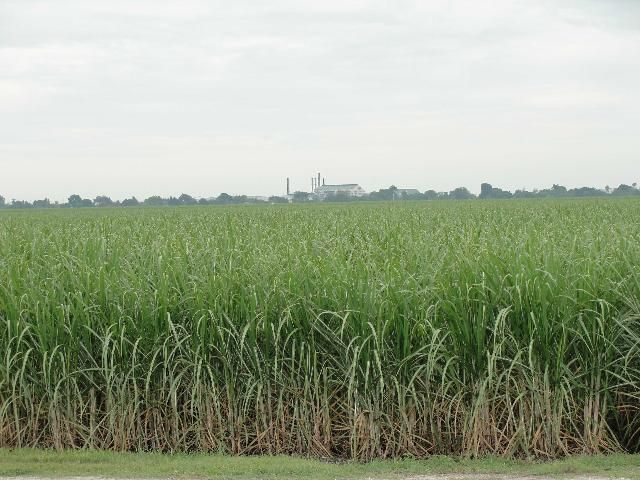The Journey of Sugarcane: From Harvest to Everyday Products
The trip of sugarcane is a complex process that starts with thorough growing and culminates in a selection of items that penetrate our daily lives. As we check out the numerous aspects of sugarcane's trip, its function in sustainability and the wider ramifications for our atmosphere come into sharper emphasis.
Farming of Sugarcane
The growing of sugarcane is a vital agricultural procedure that needs particular environmental conditions and monitoring methods. Ideal growth occurs in exotic and subtropical regions where temperature levels vary in between 20 ° C and 32 ° C. Adequate rainfall or watering is essential, as sugarcane thrives in moist dirt with well-drained problems (sugarcane product). Dirt high quality considerably affects return; therefore, farmers typically conduct soil examinations to identify nutrient requirements
This technique promotes efficient harvesting and maximizes sunshine direct exposure. Plant rotation and intercropping are suggested techniques to improve soil fertility and lower bug problems.
Timely application of these plant foods can significantly improve sugar yields. On the whole, successful sugarcane farming pivots on a mix of ecological stewardship, strategic planning, and ongoing management techniques.
Harvesting Techniques
Effective sugarcane growing finishes in the collecting phase, which is essential for making best use of return and making sure quality. The timing of the harvest is critical; sugarcane is typically collected when sucrose levels height, generally in between 10 to 18 months after growing. This duration differs based upon climate, dirt kind, and sugarcane range.
Collecting methods can be extensively categorized into guidebook and mechanical methods. Hand-operated harvesting is labor-intensive, depending on experienced workers who make use of machetes to cut the stalks close to the ground. This technique permits careful harvesting, where just the ripest walking sticks are picked, thereby boosting general sugar material.
Conversely, mechanical harvesting has gotten appeal because of its efficiency and cost-effectiveness. Specialized farmers outfitted with cutting blades and conveyor systems can refine big locations rapidly, considerably minimizing labor expenses. Nonetheless, this strategy might lead to the incorporation of immature walking sticks and a potential decline in sugar top quality.

Regardless of the technique used, making sure that collected walking canes are moved rapidly to processing centers is necessary. Prompt managing decreases perishing and protects the integrity of the sugarcane, establishing the stage for optimum processing.
Handling Methods
Processing sugarcane entails a number of crucial steps that change the collected stalks into usable items, largely sugar and molasses. The first stage is cleaning the walking stick to get rid of soil and particles, followed by the removal of juice with crushing or milling. This process commonly employs hefty rollers that break the walking stick fibers to launch the sweet liquid consisted of within.
As soon as the juice is removed, it goes through information, where pollutants such as soil particles and bagasse are gotten rid of. This is commonly attained by including lime and heating up the juice, allowing sedimentation. The cleared up juice is after that concentrated with dissipation, where water web content is lowered, causing a thick syrup.

Inevitably, the handling of sugarcane not only generates sugar and molasses yet also lays the groundwork for various derivatives, which will certainly be checked out in succeeding discussions.
Products Derived From Sugarcane
Sugarcane is a functional crop that produces a wide range of items past just sugar and molasses. Amongst hop over to these guys the main byproducts are ethanol and biofuels, which have gained importance as renewable resource sources. Ethanol, created via the fermentation of sugarcane juice, acts as an alternative to nonrenewable fuel sources and is often blended with gas to develop cleaner-burning fuels, reducing greenhouse gas emissions.
Additionally, sugarcane is a significant resource of bagasse, the coarse residue continuing to be after juice removal. Bagasse is used in different applications, consisting of the manufacturing of paper, biodegradable packaging, and as a biomass fuel for energy generation. Its usage not just minimizes waste yet likewise boosts the sustainability of sugarcane processing.
Moreover, sugarcane-derived items expand to the food industry, where it acts as an all-natural flavor agent and sugar in various cooking applications. In the world of cosmetics, sugarcane essences are integrated into skincare items as a result of their all-natural exfoliating residential or commercial properties.
Ecological Impact and Sustainability
The cultivation and handling of sugarcane have significant ramifications for ecological sustainability. This crop calls for considerable water resources, usually resulting in depletion of local water products and influencing surrounding ecological communities. Additionally, making use of fertilizers and pesticides in sugarcane farming can cause soil destruction and waterway contamination, posturing dangers to biodiversity.

Sustainable sugarcane farming also advertises soil health and wellness via plant turning and minimized husbandry, boosting carbon sequestration. The adoption of these practices not just sustains environmental honesty but likewise boosts the resilience check my blog of farming communities versus climate change.
Conclusion
In recap, the trip of sugarcane incorporates different phases from cultivation to processing, eventually leading to a broad array of site link products. The importance of sugarcane extends beyond plain sugar, contributing to sustainable energy with ethanol production, sustainable packaging using bagasse, and natural extracts for cosmetics. This diverse plant plays a vital function in both nutritional enrichment and ecological sustainability, highlighting its importance in contemporary farming and industrial methods.
Successful sugarcane farming culminates in the collecting phase, which is essential for making the most of return and making certain top quality. The timing of the harvest is important; sugarcane is usually gathered when sucrose levels peak, generally in between 10 to 18 months after planting.Handling sugarcane involves several crucial steps that transform the harvested stalks into useful products, largely sugar and molasses.Sugarcane is a flexible crop that yields a wide selection of items past simply sugar and molasses. In addition, the usage of fertilizers and pesticides in sugarcane farming can result in soil destruction and waterway air pollution, presenting risks to biodiversity.